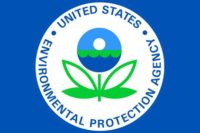When engineering control measures aren’t possible or sufficient to reduce exposure to harmful contaminants such as dusts, fogs, fumes, mists, gases, smokes, sprays, or vapors, OSHA requires – through its 1910.134 standard1 – that workers be provided with respiratory protection.
It’s not enough for a company to simply hand out respirators. In the standard, companies must develop and implement a written respiratory protection program with worksite-specific procedures. Additionally, the program must be administered by a suitably trained program administrator.
Elements of a respiratory protection program include: procedures for selecting the appropriate respirators; medical evaluations of employees required to use respirators; fit testing procedures for tight-fitting respirators and procedures for proper use of respirators in routine and reasonably foreseeable emergency situations.
An estimated five million workers are required to wear respirators in 1.3 million workplaces throughout the U.S. With airborne contaminants linked to cancer and lung disease, OSHA says compliance with its respiratory protection standard could avert hundreds of deaths and thousands of illnesses annually.2
Enforcement action
The lack of compliance in many workplaces is reflected in the standard’s fourth place ranking on OSHA’s list of top 10 most frequently cited workplace safety violations for fiscal year 2015.
Agency inspectors issued a total of 3,552 respiratory protection-related citations deriving from 1,627 inspections across all industries, with assessed penalties totaling $2,731,806.
The fabricated metal product manufacturing industry was the top citation-getter, with 510 citations from 234 inspections and proposed penalties of $332,674. Specialty trade contractors came next, earning 491 citations and $308,122 in fines from 228 inspections. Repair and maintenance facilities were inspected 137 times, which yielded 367 citations and $166,189 in fines.
There was a considerable gap between repair and maintenance and the next category on the list, transportation equipment manufacturing. Hazards found during 79 inspections of those types of facilities amounted to 190 citations and $97,934 in penalties. Close behind came nonmetallic mineral product manufacturing, with 180 citations from 78 inspections, and $84,507 in fines.
Machinery manufacturing accounted for 147 citations and $96,009 in proposed penalties, from 68 inspections. Merchant wholesalers, durable goods were inspected 63 times (147 citations, $88,420 in penalties). Furniture and related product manufacturing saw 123 inspections (56; $71,101). Chemical manufacturing workplaces earned an average of two citations for each inspection (103; 50; $150,432 in fines). Wood product manufacturing employers were issued 94 citations (48; $43,311).
Anecdotal non-compliance
A sampling of citations shows the potential cost of failing to comply. A family attraction in Connecticut was fined $70,000 for exposing employees to respiratory and other hazards. Workers had to spray flammable materials on park equipment when a ventilation system was inactive. The company also failed to provide employees with respirator training and do fit-testing.
Health and safety hazards found at a Wisconsin recycling plant3 included a repeat violation for the company’s failure to develop and implement a respiratory protection program. The Houston-based company was cited for failing to provide respiratory protection and failing to prevent workplace exposure to airborne concentrations of dust and lead above the eight-hour time-weighted average limit.
1. www.osha.gov/pls/oshaweb/owadisp.show_document?p_id=12716&p_table=STANDARDS
2. www.osha.gov/SLTC/respiratoryprotection/index.html
3. www.osha.gov/pls/oshaweb/owadisp.show_document?p_table=NEWS_RELEASES&p_id=25041




